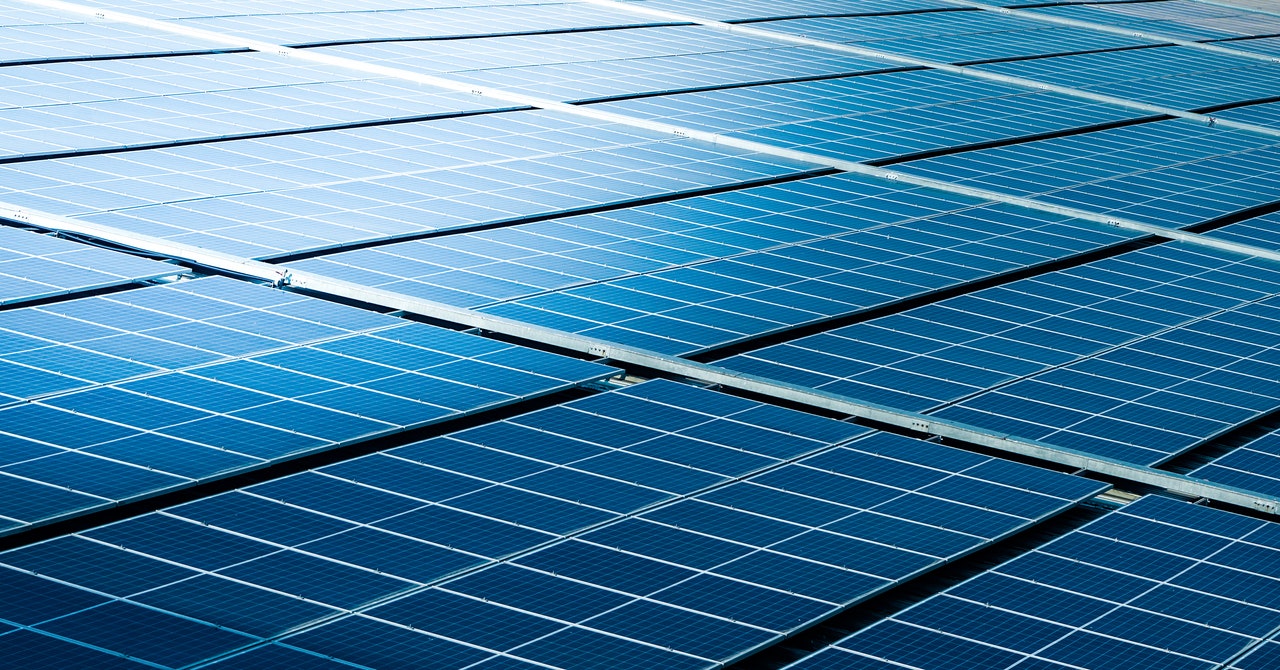THIS ARTICLE IS republished from The Conversation under a Creative Commons license.
The sight of solar panels installed on rooftops and large energy farms has become commonplace in many regions around the world. Even in the gray and rainy UK, solar power is becoming a major player in electricity generation.
This surge in solar is fueled by two key developments. First, scientists, engineers, and those in industry are learning how to make solar panels by the billions. Every fabrication step is meticulously optimized to produce them very cheaply. The second and most significant is the relentless increase in the panels’ power conversion efficiency—a measure of how much sunlight can be transformed into electricity.
The higher the efficiency of solar panels, the cheaper the electricity. This might make you wonder: Just how efficient can we expect solar energy to become? And will it make a dent in our energy bills?
Commercially available solar panels today convert about 20 to 22 percent of sunlight into electrical power. However, new research published in Nature has shown that future solar panels could reach efficiencies as high as 34 percent by exploiting a new technology called tandem solar cells. The research demonstrates a record power-conversion efficiency for tandem solar cells.
What Are Tandem Solar Cells?
Traditional solar cells are made using a single material to absorb sunlight. Currently, almost all solar panels are made from silicon—the same material at the core of microchips. While silicon is a mature and reliable material, its efficiency is limited to about 29 percent.
To overcome this limit, scientists have turned to tandem solar cells, which stack two solar materials on top of each other to capture more of the sun’s energy.
In the new Nature paper, a team of researchers at the energy giant LONGi has reported a new tandem solar cell that combines silicon and perovskite materials. Thanks to their improved sunlight harvesting, the new perovskite-silicon tandem has achieved a world record 33.89 percent efficiency.
Perovskite solar materials, which were discovered less than two decades ago, have emerged as the ideal complement to the established silicon technology. The secret lies in their light absorption tunability. Perovskite materials can capture high-energy blue light more efficiently than silicon.
In this way, energy losses are avoided and the total tandem efficiency increases. Other materials, called III-V semiconductors, have also been used in tandem cells and achieved higher efficiencies. The problem is they are hard to produce and expensive, so only small solar cells can be made in combination with focused light.
The scientific community is putting tremendous effort into perovskite solar cells. They have kept a phenomenal pace of development with efficiencies (for a single cell in the lab) rising from 14 percent to 26 percent in only 10 years. Such advances enabled their integration into ultra-high-efficiency tandem solar cells, demonstrating a pathway to scale photovoltaic technology to the trillions of watts the world needs to decarbonize our energy production.
The Cost of Solar Electricity
The new record-breaking tandem cells can capture an additional 60 percent of solar energy. This means fewer panels are needed to produce the same energy, reducing installation costs and the land (or roof area) required for solar farms.
It also means that power plant operators will generate solar energy at a higher profit. However, due to the way that electricity prices are set in the UK, consumers may never notice a difference in their electricity bills. The real difference comes when you consider rooftop solar installations where the area is constrained and the space has to be exploited effectively.

